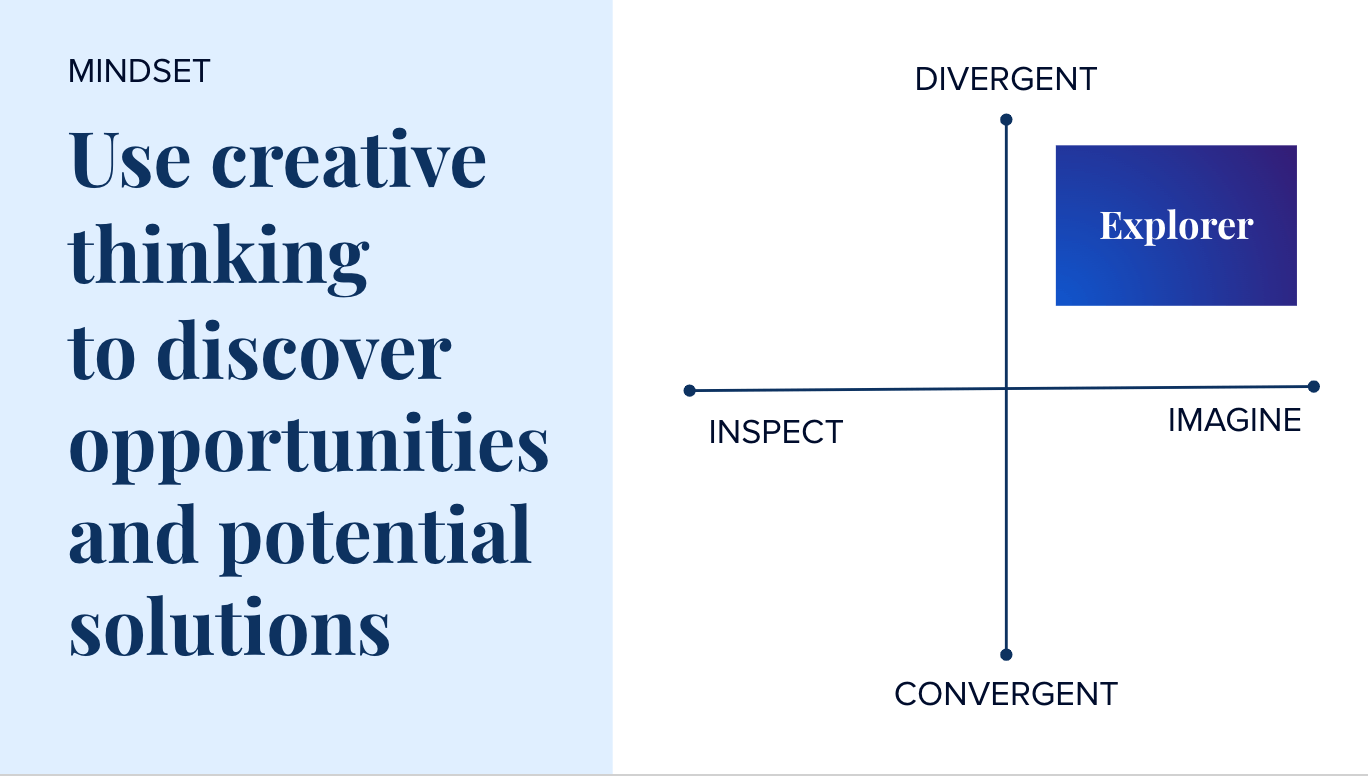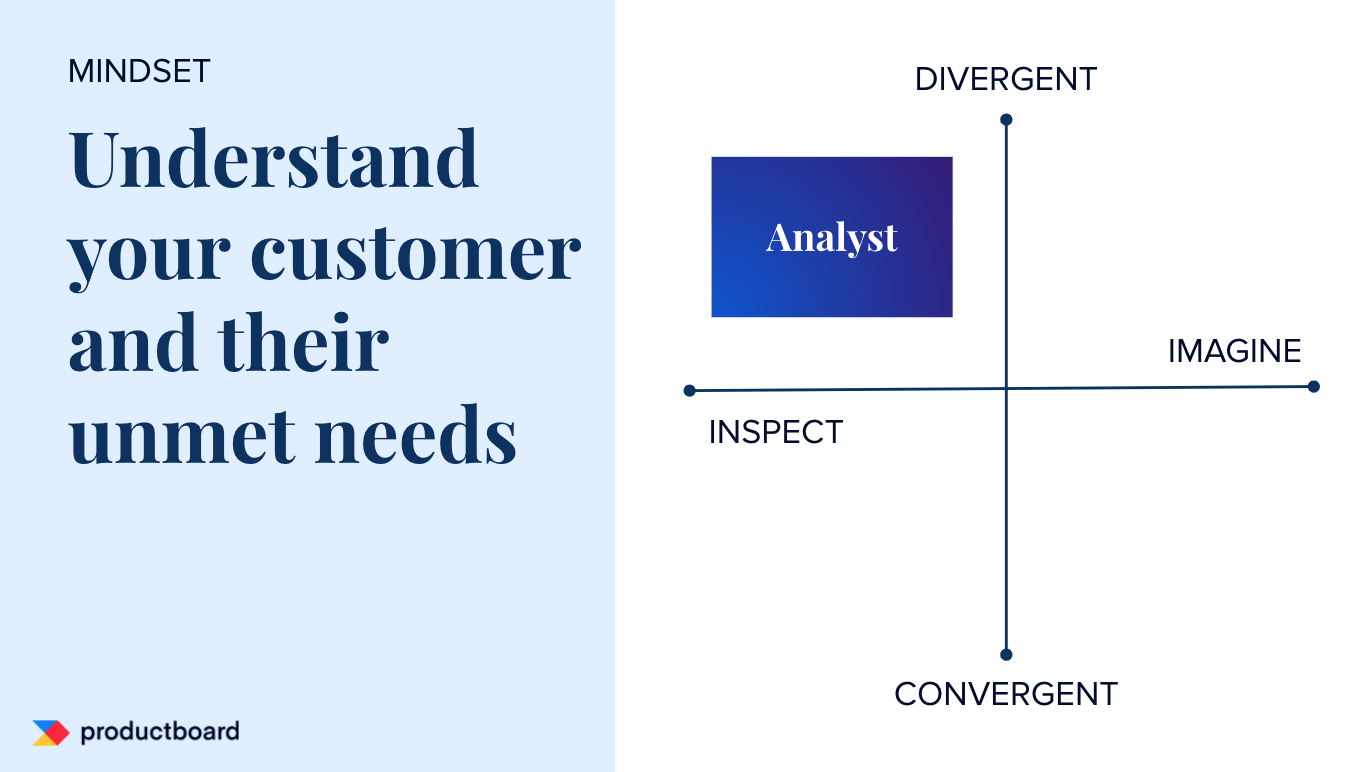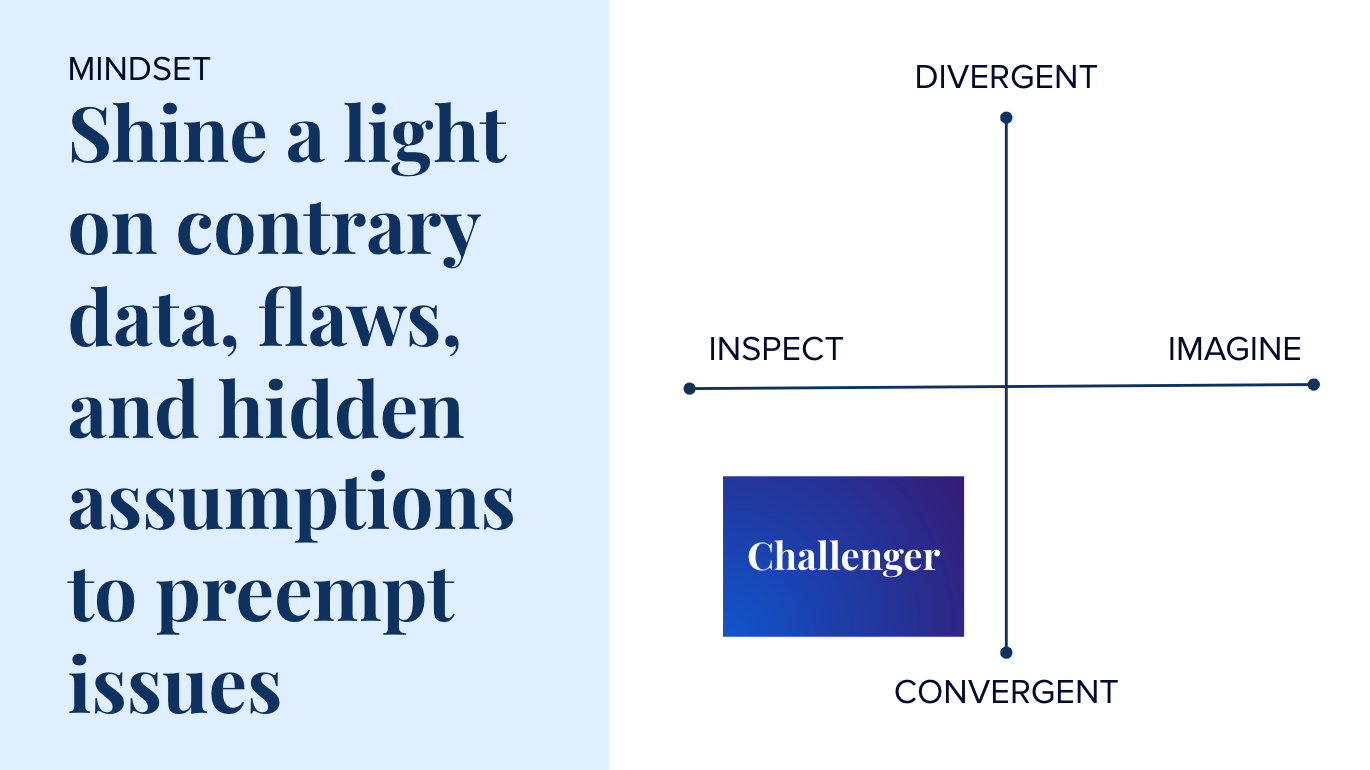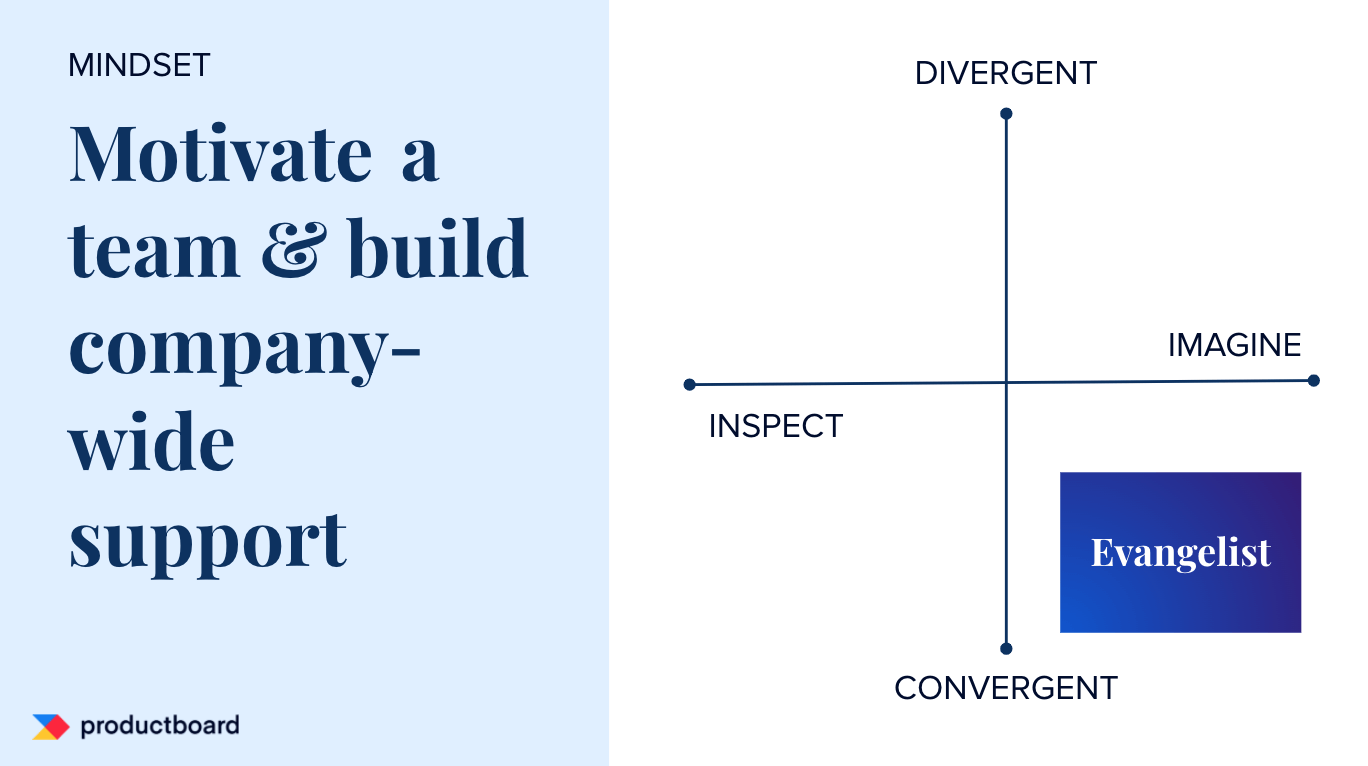Ken Sandy on the four mindsets of influential product managers

In the latest episode in our Age of Product Excellence series, we were super excited to welcome seasoned product leader Ken Sandy. During an hour-long webinar, Ken presented the four mindsets of influential product managers – Explorer, Analyst, Challenger, and Evangelist.
In case you missed it, here’s a recap of Ken’s presentation.
How the four mindsets came to be
During his 20-year career in the product world, Ken Sandy has observed product managers working in many different environments – from large enterprises to VC-funded startups and everything in between. Across all of these areas, he noticed key behaviors and traits that separate the best product managers from the rest.
“I was looking at how great product managers are able to set the context for their teams, encourage ideation and brainstorming, understand the customer and their market, know when to say no to an idea, see around corners to potential risks or problems, and engage stakeholders and teams in a way that motivates and propels their priorities forward. I was wondering if there was a way to codify these practices. I wanted to make them explicit so that any product manager could understand and apply them. The result is the framework that I’ll be introducing today.”
The four mindsets – a model for better product management
Over time, Ken found that these key behaviors are attributable to four mindsets: what he calls Explorer, Challenger, Analyst, and Evangelist. He created a simple framework to visualize how these mindsets relate to each other and arise out of a combination of different thinking styles.
On one extreme of the horizontal axis, you have the notion of imagining, which is about discovering new opportunities, exploring multiple potential solution paths, and perhaps suspending long-held beliefs and ignoring the limitations that you or your organization might face
On the other end of the scale is the concept of inspection, which is about looking at the reality in front of you today. This means looking at your product and its performance, gathering data and discover hidden insights, assessing product performance, and evaluating ways that your product can improve.
Crossing the horizontal axis is a vertical one that represents another spectrum of thinking. At one end of the scale is divergent thinking, which is about broadening your perspective, brainstorming, discovering, sharing data, exploring parallel paths of inquiry, and making sure that you’re not settling on any particular approach prematurely.
At the other end of the scale is convergent thinking, where you hone in and focus on one idea.
According to Ken, product managers need to operate across these spectrums to be effective.
Mindset 1 – Explorer

The Explorer mindset arises out of a combination of imagining and divergent thinking. This is where you and your team get creative to discover opportunities and potential solutions. It’s about being able to see and articulate the bigger picture, imagining the amazing things a product could achieve.
“It’s about allowing the team time to explore multiple solutions and being open to ideas and creative thinking. You’re not trying to say no to things yet.”
Within the Explorer mindset, you have to ensure that you are investigating solutions around the right problems and that you are clear on your target customer.
“Make sure that you define what you are trying to achieve, why you are trying to achieve it, and for whom. Develop a product vision to help people imagine what the product could achieve when it’s fully built. But remember, your job is not to have all the ideas or be the smartest person in the room. Rather, your job is to guide your team and the company towards the best ideas.”
Mindset 2 – Analyst

In the next quadrant, you have what Ken calls the Analyst mindset, which is a combination of inspection and divergent thinking. This is where you dive deep into data to understand your customer and their unmet needs.
“In the Analyst mindset, you are effectively a detective going hunting for new data and insights. You want to develop a deep understanding of your customer through quantitative and qualitative data. Quantitative data might give you insights into trends or underlying issues. But you also want to talk to customers, observe their problems, and get to know them as people.”
Product managers often have to fight for attention from data teams, which can be a scarce resource. To avoid this battle, Ken recommends empowering yourself and your team by becoming a data expert yourself.
Ken also emphasized the importance of setting performance metrics at the outset around the outcomes you want to drive towards.
“If you define outcome-related performance metrics early on, you shift the conversation with stakeholders and your team away from specific features, solutions, delivery dates, or milestones and towards actual outcomes. You focus on what you are trying to achieve or effect for the business and your customers.”
Mindset 3 – Challenger

The third mindset, what Ken calls Challenger, arises at the intersection of inspection and convergent thinking. Here, your job is to identify and mitigate risks – to use data to challenge preconceived notions. In this mindset, you should approach all opportunities as hypotheses requiring validation.
“You might be looking for flaws, hidden assumptions, things that people assume to be true. It’s all about asking those hard questions and preempting different issues. You’re open to the possibility of being wrong. This may mean that you’ll have to change course, diverging from a path you may have supported.”
The Challenger mindset is where you actively seek out dissenting voices. You go out and listen to customers who aren’t 100% satisfied with your product and try to understand what is causing their concerns. You try to find stakeholders that disagree with you. It is all about being OK with constructive conflict.
Mindset 4 – Evangelist

The fourth mindset is what Ken calls the Evangelist – the result of imagining and convergent thinking. In a nutshell, the Evangelist mindset is about building momentum and excitement around what you are making and its impact on the company and customers.
“You are trying to motivate and build broad-based support for a particular path that you’ve decided on. You want to get stakeholders and your team deeply engaged and fired up about the solution you are going with.”
To achieve this, you have to communicate effectively with a broad group of stakeholders. Ken suggests building a stakeholder map across all levels where support is required – not just your manager, engineering team, or executives, but key people across all departments. Then, communicate with them proactively and effectively.
“Status updates are boring. Remind stakeholders instead about the value that you, your team, and your product are bringing to the organization. And do that regularly. Repeatedly share goals and outcomes.”
Applying the four mindsets
There is a natural linear progression from one mindset to another, following the product development lifecycle. For example, you might start with the Explorer mindset when imagining possibilities, then move into the Analyst mindset to gather data and insights during discovery, then test out ideas in the Challenger mindset, before finally drumming up excitement in the Evangelist mindset.
However, Ken believes that we should try to approach these mindsets in a more fluid, less rigid way.
“You need to be able to flip seamlessly between the four mindsets at any point in time. If you don’t, you might miss something important. For example, one day you might need to get your team excited and focused on a particular initiative, while the next day you’ll get data on whether or not that thing is working, which may require you to challenge your assumptions.
“Instead of following the mindsets linearly, you need to be able to jump in and out of them as the situation permits.”
Some mindsets naturally lend themselves to certain business environments. For example, the ability to imagine future states and grow excitement around the product vision could make the Explorer and Evangelist mindsets more important in an early-stage startup than in an established corporation. Meanwhile, an established company will have a treasure trove of data and consumer insights to dig through, making the Analytical mindset extremely important.
However, Ken stressed that product managers need to spend some time in all four mindsets, regardless of their company or product. If you’re working on a very mature product, you still have to keep your team excited about the work they are doing. Likewise, if you are working in an early-stage startup, you still need to challenge the assumptions you have about the problems you are solving and the solutions you are proposing.
Moving out of your comfort zone
While a successful product manager doesn’t need to master all four mindsets at once, they must be willing to go outside of their comfort zones – their go-to strengths – and balance their thinking.
This is not easy, of course. Our inherent personality traits tend to dictate where we feel comfortable or uncomfortable. But by understanding which mindsets you regularly employ and which you struggle with, you have a clear picture of the areas you need to work on to become a more well-rounded product manager.
“Do things that are outside of your comfort zone. If you’re not particularly extroverted, get up on stage, evangelize your product, and embrace going on customer interviews instead of staying at your desk and burying your head in data. Try to leverage the strengths of others. If you are not a natural Challenger, go and find those engineers who always poke holes in everything that you do – and learn from them. This is how you become a better product manager.”
To learn more about the four mindsets and how product managers can be more successful in The Influential Product Manager.





![The CPO’s Blueprint for Annual Planning: An Opportunity to Drive Change [Part 3]](https://www.productboard.com/wp-content/uploads/2024/11/strategy-blueprint-560x293.png)
